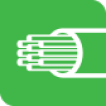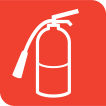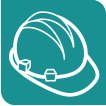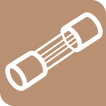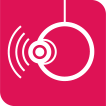If a property was built or renovated before 1990 it is likely to contain some form of asbestos material. Due to its prevalence in Australian homes, it is important to know whether the property you are working on contains asbestos and how to avoid disturbing it.
Asbestos is a known carcinogen, and inhaling asbestos fibres is associated with diseases including pleural disease, asbestosis, lung cancer and mesothelioma. Even limited or short-term exposure to asbestos fibres can be dangerous. Asbestos in good condition that is unlikely to be disturbed poses minimal health risk, however airborne fibres are easily generated either through weathering or from building related activity such as drilling, cutting or sanding. It is important to know whether asbestos is present before you begin work to ensure that it remains undisturbed.
Electricians can be exposed to asbestos in a wide range of field specialties; from power stations to fixing up a cable in a street pit or conduit to a suburban home. These areas are all on top of regular types of asbestos- containing materials encountered in a residence such as roofs, walls, ceilings, soffits or eaves linings. Main electrical meters, fuse boxes and boards hold a number of asbestos-containing materials like resin board; generally black in colour with brand names such as “Ausbestos” or “Zelemite” stamped on them. Behind these boards can be insulating asbestos side, back and top panels of asbestos cement sheet, asbestos insulation board, asbestos millboard or even a combination of them. Asbestos millboard is like a paper or cardboard form of asbestos.
Drilling and cutting asbestos-containing materials is one of the biggest risks to electricians; whether it is friable or non-friable. Friable means you can break it up with just your fingers. For example, millboard or asbestos insula-tion board is friable, asbestos cement pipe or asbestos based resin board is generally non-friable. If you can crush it up with your fingers, it means it’s easy to breathe in and you risk getting an asbestos-related disease.
SAFETY TIPS
- Keep a cartridge half face mask (P2) and some additional paper (P2) disposable masks on hand in your toolbox as backups which you can dispose of appropriately later.
- Keep some important equipment in your work vehicle like a water spray bottle, disposable overalls, gloves, a 200 micron thick plastic bag to seal the waste material properly and duct tape. That way you are not leaving the asbestos lying around.
- Try not to give in to the “she’ll be right this time” mindset in order to get a job done faster. Even though the asbestos fibres that can harm you are invisible to the human eye, they are there and you can easily take them home with you to your family!
- Asbestos fibres the size of 3-5 microns long and 1-2 microns wide can easily get stuck in your lungs. The easiest way to control exposure to asbestos is to not make dust and don’t put your unprotected face near it if you do!
- Electricians are one of the fastest growing job categories with increasing cases of asbestos-related disease in Australia, so don’t risk it. A simple P2 paper mask, properly fitted and worn every time you drill into something could save your life.
Excerpts from Asbestos awareness information for electricians by the Asbestos-Safety-and-Eradication-Agency. Go to www.asbestossafety.gov.au.
For more information contact the work health and safety regulator in your state or territory.



